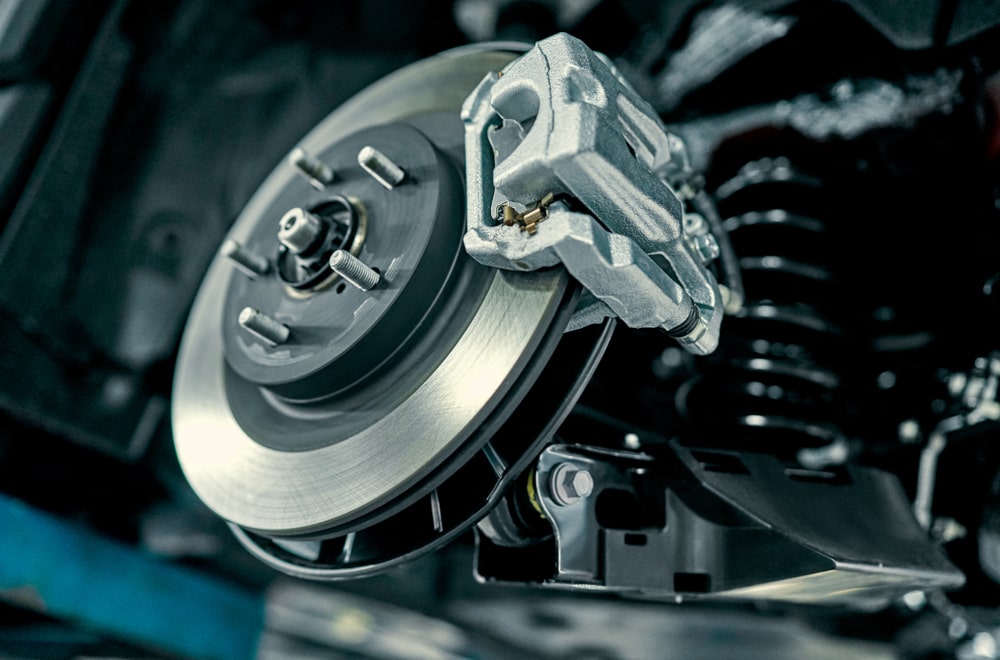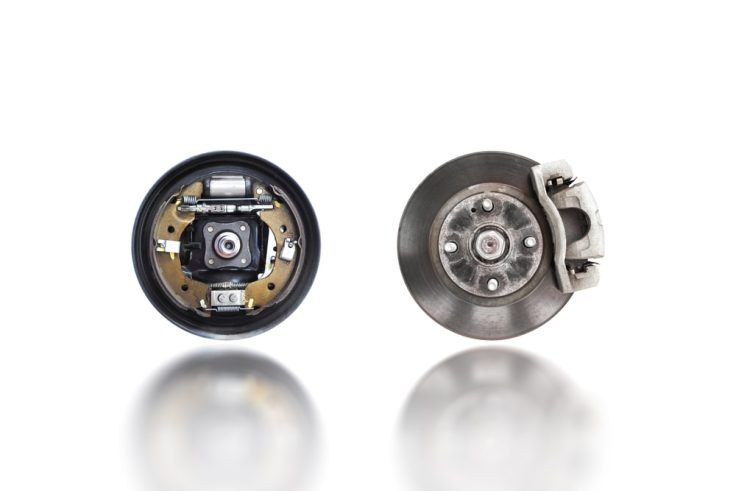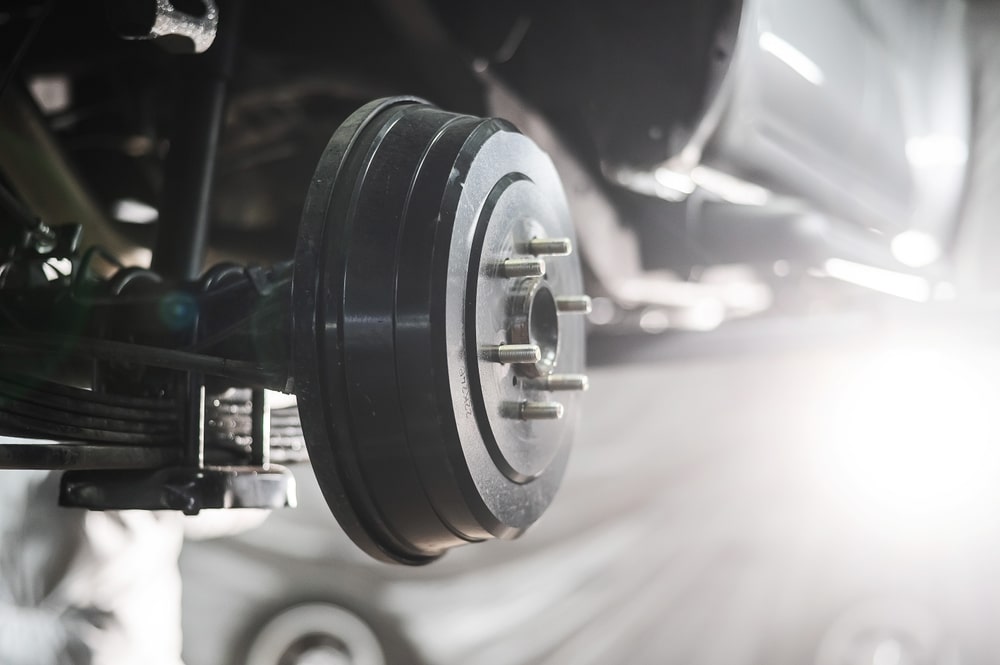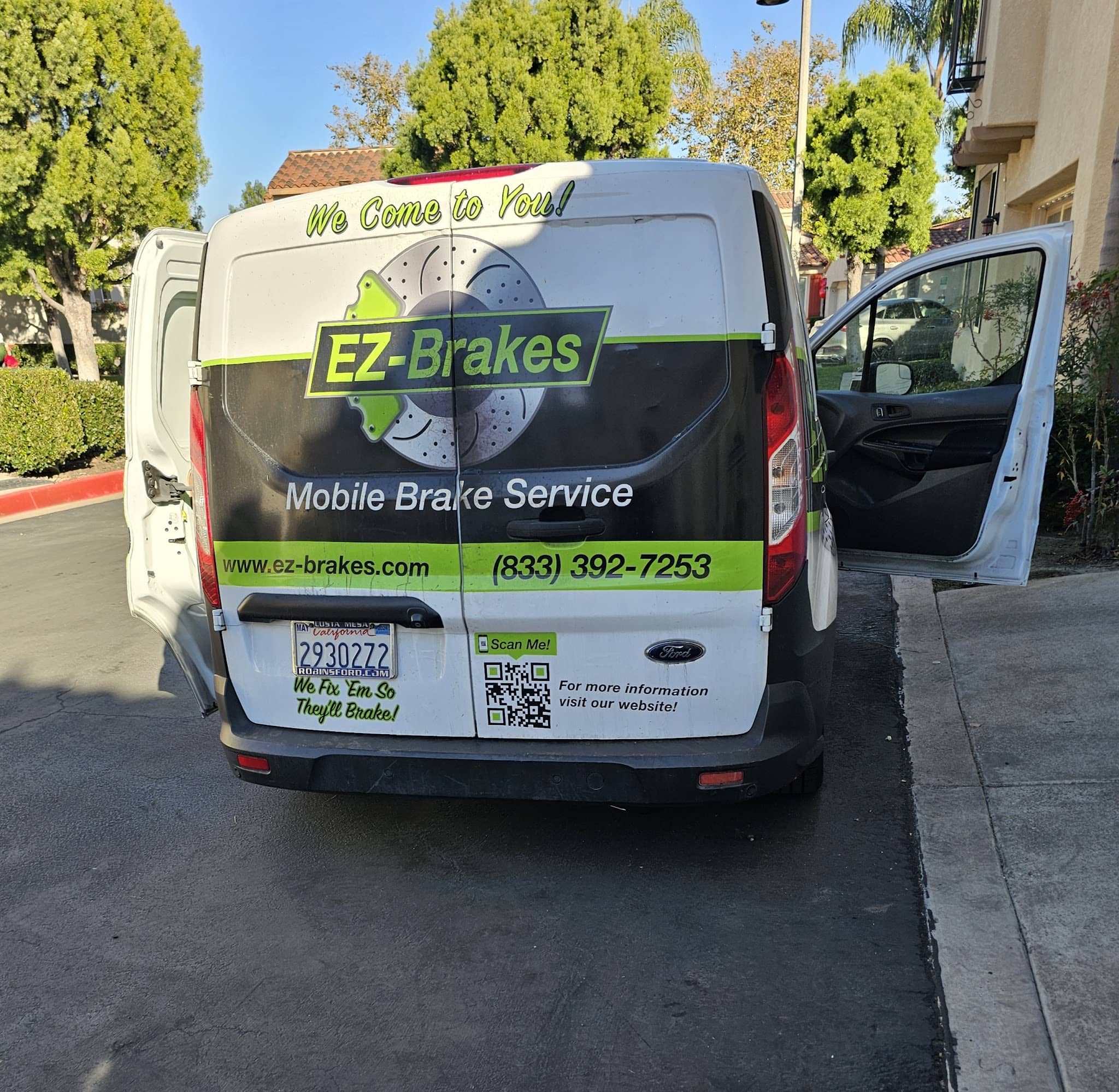When it comes to vehicle braking systems, the disc brakes vs drum brakes debate is significant for both performance and safety. Understanding how each system operates, as well as their respective advantages and disadvantages, is crucial for anyone seeking the best option for their vehicle. This detailed comparison will focus on key factors like maintenance, brake pad life, heat dissipation, and more. Whether you’re looking for front disc brakes, rear drum brakes, or considering upgrades like air disc brakes, this guide will help you make an informed decision.

What Are Disc Brakes and How Do They Work?
Disc brakes are a popular braking system due to their superior performance, especially under demanding conditions. They are typically used in front disc brakes systems and often in air brake systems for large vehicles.
How Disc Brakes Work
In a disc brake vs drum brake system, disc brakes use a metal rotor that rotates with the wheel. When you press the brake pedal, hydraulic pressure forces the brake pads to clamp down on the rotor, creating friction that slows the vehicle. The friction of the brake pads against the rotor produces thermal energy that must be dissipated efficiently to avoid overheating.
• Rotor (Side of the Rotor): The metal disc that spins with the wheel. The diameter of the rotor is designed for effective braking performance.
• Brake Pads: The components that create friction with the rotor to generate stopping power.
• Caliper: A hydraulic device that holds and applies pressure to the brake pads.
Disc Brakes: Pros and Cons
Pros:
• Better heat dissipation: Disc brakes are designed to manage thermal expansion and dissipate thermal energy, leading to fewer instances of brake fade.
• Longer service intervals: Disc brakes generally require less frequent maintenance compared to drum brake systems.
• Consistent braking: Even at very high temperatures, disc brakes maintain performance, making them ideal for high-speed or heavy-duty applications.
Cons:
• More complex construction: Disc brake systems are often more intricate and require professional servicing from an expert mechanic.
• Higher upfront cost: While the initial investment can be higher, disc brakes may offer greater value over time.
What Are Drum Brakes and How Do They Work?
Though older, drum brakes are still commonly found in rear-wheel braking systems, particularly in vehicles that use rear drum brakes.
How Drum Brakes Work
Drum brake systems function differently from disc brakes. The braking mechanism involves a metal drum that rotates with the wheel. When the brake pedal is pressed, brake shoes press against the inside of the drum, creating friction to slow down the vehicle.
• Brake Drum: The cylindrical component that rotates with the wheel. The diameter of the drum can vary, influencing braking performance.
• Brake Shoes: Curved friction materials that press against the drum to create stopping power.
• Wheel Cylinder: A hydraulic component that forces the brake shoes outward.
Drum Brakes: Pros and Cons
Pros:
• Fewer components: The simpler design of drum brake systems makes them less expensive to manufacture and repair.
• Effective for light-duty vehicles: Ideal for cars or trucks that don’t require high-performance braking.
Cons:
• Lower heat dissipation: Drum brakes are not as effective at dissipating thermal energy as disc brakes. As a result, they tend to overheat, leading to brake fade under extended use.
• Shorter lifespan: The brake pad wear and brake pad life are often shorter compared to disc brake systems due to thermal expansion during high braking periods.
| Feature | Disc Brakes | Drum Brakes |
| Design | Uses a metal rotor and brake pads to create friction | Uses a rotating metal drum and brake shoes to create friction |
| Heat Dissipation | Better heat dissipation, reducing brake fade | Poorer heat dissipation, can overheat under heavy braking |
| Performance in Wet Conditions | Performs well in | Performance reduces in wet conditions due to water accumulation in the drum |
| Brake Pad Wear | Even wear, longer brake pad life | Faster wear due to higher heat buildup and friction |
| Maintenance | Easier to maintain and inspect | More complex to maintain and repair due to internal components |
| Cost | More expensive to manufacture and repair | More cost-effective for budget-friendly vehicles |
| Braking Power | Superior stopping power, ideal for high-performance vehicles | Adequate for lighter-duty applications but less powerful |
| Installation | Requires a more complex setup and often professional installation | Simpler installation, especially in older vehicles |
| Typical Use | Used in front brakes of most modern vehicles | Common in rear brakes of older or more budget-friendly cars |
| Durability | Longer-lasting with longer service intervals | Shorter lifespan due to higher wear under heavy braking |
Read more: 5 Signs It’s Time for a Brake Pad Replacement
Disc Brakes vs Drum Brakes: Key Differences
Understanding the key differences between disc vs drum brakes can help you decide which system is best suited for your vehicle.
1. Heat Dissipation and Braking Performance
• Disc Brakes: Better heat dissipation ensures that thermal energy generated during braking is spread out, which minimizes brake fade, especially in high-speed or frequent stop-and-go situations.
• Drum Brakes: Drum brake systems are less effective at dissipating thermal energy, causing them to overheat, especially during continuous or heavy braking, leading to reduced braking performance.
2. Brake Maintenance
• Disc Brake vs Drum Brake Maintenance: Maintaining disc brakes is generally easier, as they’re more accessible and exposed. Drum brake systems, however, require more intricate maintenance due to the complex construction and the fact that components are hidden within the drum.
3. Performance in Different Driving Conditions
• Disc Brakes: Provide consistent braking power in all conditions, including wet weather and high temperatures.
• Drum Brakes: Struggle in wet conditions, as moisture can collect inside the drum, reducing braking performance.
Which Is Better for Your Vehicle: Disc Brakes vs Drum Brakes?
Choosing between disc vs drum brakes depends on factors such as vehicle use, performance needs, and maintenance preferences. Let’s break down which is the best option for different scenarios.
When to Choose Disc Brakes
• Heavy-duty applications: If you need brakes that perform well under high loads, such as for large trucks or air brake systems, disc brakes are the best option.
• High-performance vehicles: Cars that require precise control and better heat dissipation, like sports cars, should be equipped with front disc brakes.
• Longer service intervals: For vehicles that need longer service intervals, disc brakes are more durable and require less frequent maintenance.
When to Choose Drum Brakes
• Budget-conscious vehicles: If you’re an average American family looking to save on costs, drum brake systems can be a great option, particularly in rear-wheel setups or smaller vehicles.
• Light-duty applications: For vehicles that don’t require heavy braking or high-performance capabilities, rear drum brakes may be sufficient.
• Fewer components: If you’re seeking a simpler brake system that’s easier to maintain and repair, drum brakes may be a better fit for your vehicle.
FAQ: Disc Brakes vs Drum Brakes
WHAT IS THE MAIN DIFFERENCE BETWEEN DISC BRAKES AND DRUM BRAKES?
The main difference between disc brakes vs drum brakes lies in their design and function. Disc brakes use a rotor and brake pads to create friction, while drum brakes use brake shoes that press against the inside of a rotating drum.
WHICH BRAKING SYSTEM IS EASIER TO MAINTAIN: DISC BRAKES OR DRUM BRAKES?
Disc brake vs drum brake maintenance shows that disc brakes are generally easier to maintain and inspect due to their exposed design. Drum brakes, on the other hand, require more complex maintenance because of their enclosed construction.
WHICH BRAKING SYSTEM IS SAFER: DISC OR DRUM BRAKES?
Disc brakes are considered safer, especially under very high temperatures and in conditions where thermal expansion could affect braking performance. They provide better heat dissipation and perform more reliably during frequent braking.
ARE DISC BRAKES MORE EXPENSIVE THAN DRUM BRAKES?
Yes, disc brakes vs drum brakes show that disc brakes are generally more expensive due to their advanced technology and superior braking performance. However, they often offer greater interest savings account benefits over time through reduced maintenance costs.
CAN I SWITCH FROM DRUM BRAKES TO DISC BRAKES?
Yes, you can upgrade from drum brakes to disc brakes, but this requires a conversion kit and professional installation, often by an expert mechanic. This is a popular option for improving performance in vehicles that require better heat dissipation.
Conclusion: Disc Brakes vs Drum Brakes – Which One Is Right for You?
The disc vs drum brakes comparison comes down to your vehicle’s needs, driving conditions, and budget. Disc brakes offer superior performance, better heat dissipation, and longer service intervals, making them ideal for high-performance and heavy-duty vehicles. However, drum brake systems are more cost-effective and are perfectly adequate for light-duty applications.
At EZ-Brakes, we recommend consulting with an expert mechanic to determine which brake system is the best option for your vehicle. Whether you choose front disc brakes, rear drum brakes, or air disc brakes, proper maintenance and care are essential for maximizing the performance and lifespan of your brakes.




